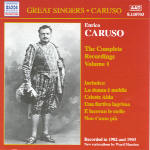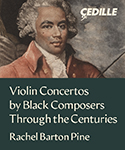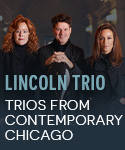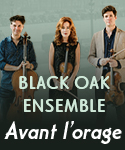To think these 27 selections were recorded nearly 100 years ago! Record making was still in its teething stages when Enrico Caruso first stood before the acoustic horn in 1902. Yet your attention quickly gets past the myriad sonic and musical blemishes (probably unnoticeable then, and irrelevant now) and zeros in on the voice. You might start with his first Celeste Aida (from April 1902), more tender and wistfully lyrical than the singer’s emphatic, slightly impatient remake later in the year. Bask in Una Furtiva Lagrima’s endless line and lilting ornaments, or indulge the singer’s heartfelt sobs at the climax of E Lucevan le Stelle.
It’s important to realize that this was contemporary music to Caruso. Indeed, Giordano’s Amor ti Vieta and Cilèa’s No, Più Nobile feature their respective composers at the piano. More to the point, Caruso infuses all he sings with resplendent directness and generosity, forging a style that quickly became the archetype for all Italian tenors. Ward Marston’s transfers of these first sessions are noisier but more evenly equalized than William Moran’s for RCA’s complete Caruso edition. On the other hand, Moran’s mid-range emphasis adds a soupçon of baritonal heft to the voice. This only proves a clear advantage in the murkily recorded 1903 Zonophone sessions. As I compared Marston’s earlier Caruso transfers for Pearl with the present edition, I realized I was blocking out the music in order to split sonic hairs. But at Naxos’ budget price, you can hardly go wrong. This is the best sounding single-disc incarnation of these sessions.
































